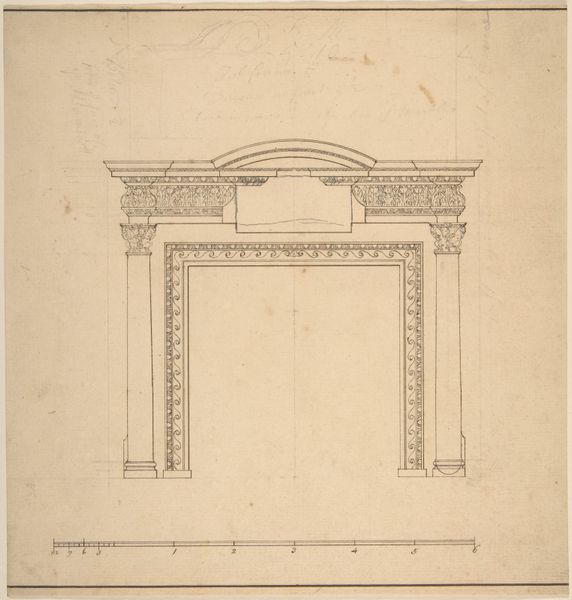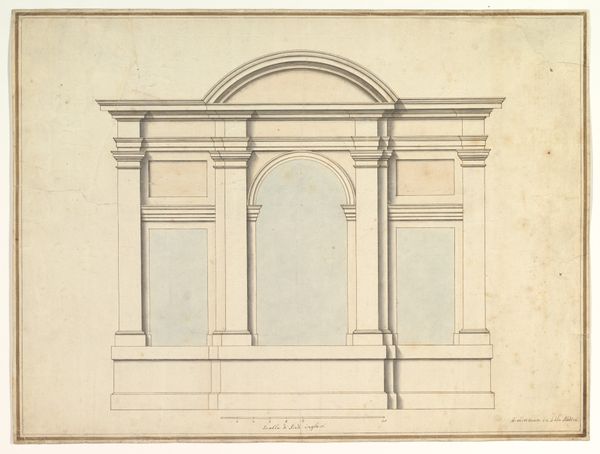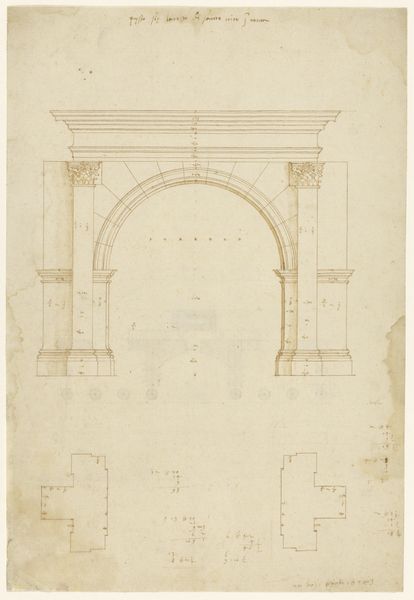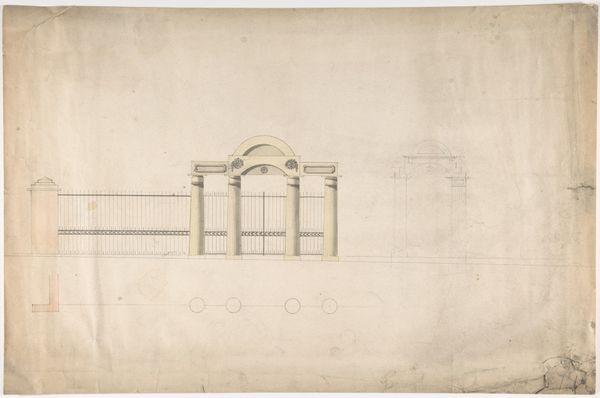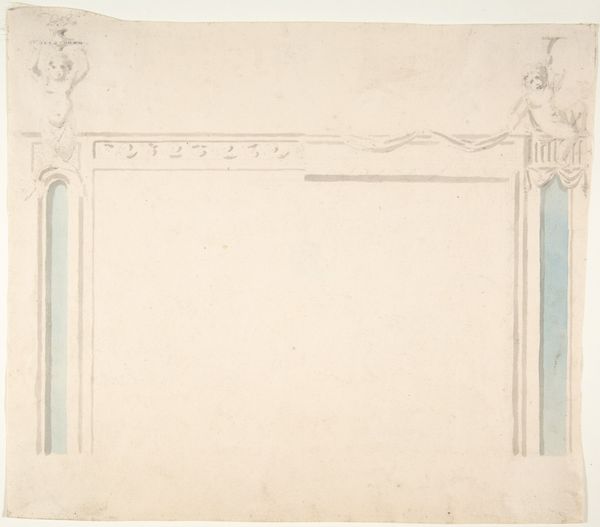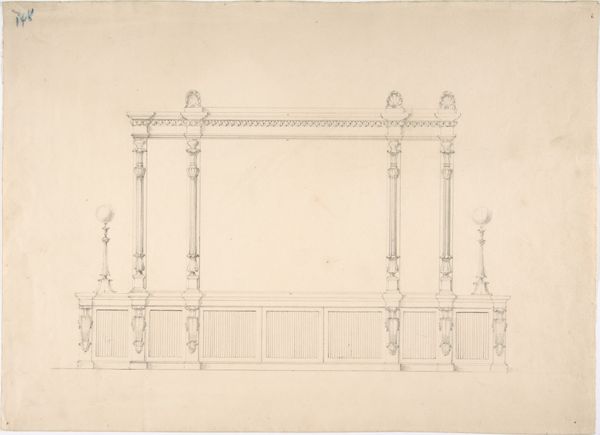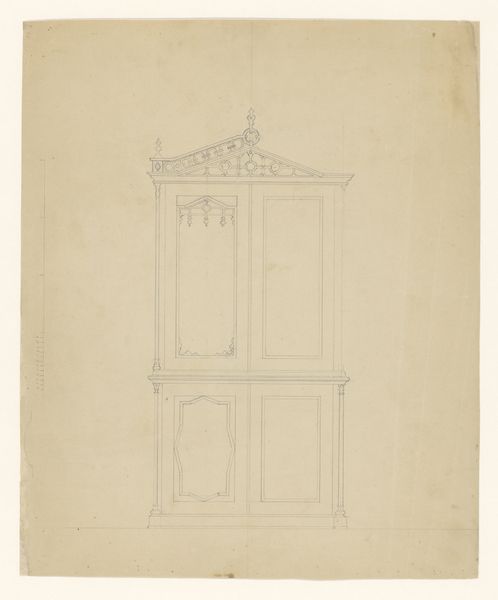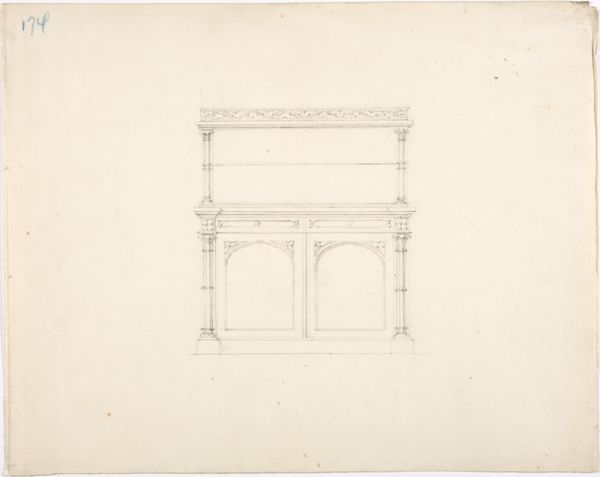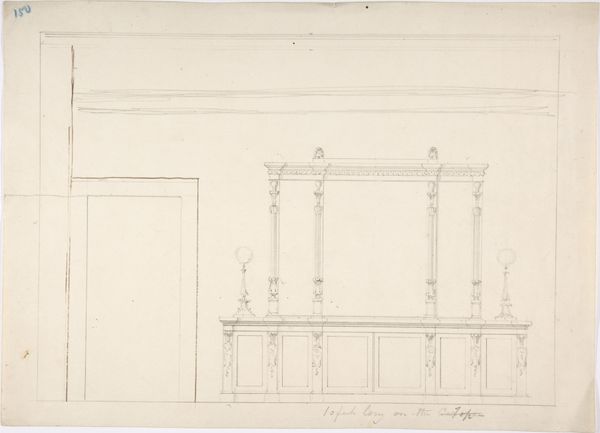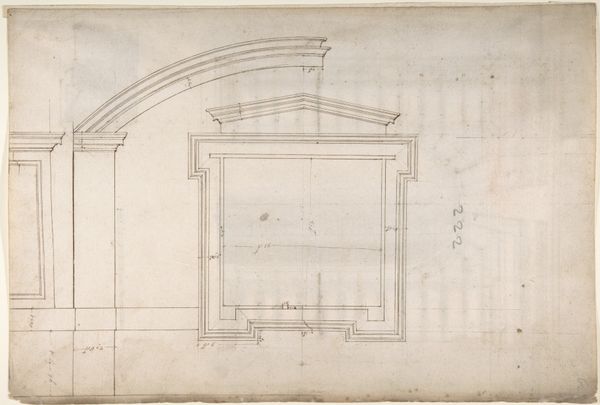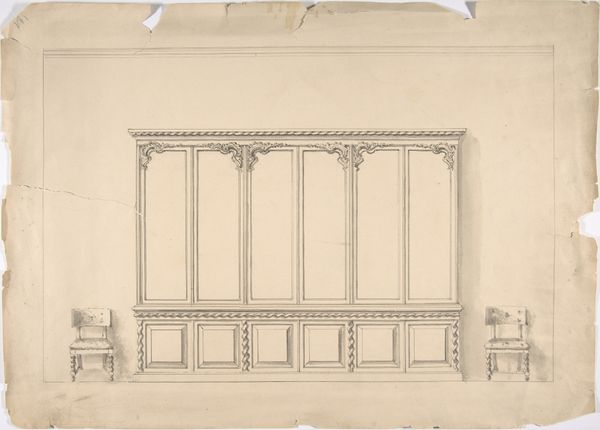
drawing, paper, pencil, architecture
#
drawing
#
neoclacissism
#
paper
#
form
#
geometric
#
pencil
#
line
#
architecture
Dimensions: 416 mm (height) x 573 mm (width) (bladmaal)
Curator: This is Nicolai Abildgaard's "Tv\u00e6rsnit af Apistemplet", dating from between 1743 and 1809. It’s a drawing in pencil on paper. What’s your initial reaction? Editor: It strikes me as surprisingly skeletal, a blueprint more than a building. The precision of the lines is austere. Curator: Absolutely. Abildgaard was working within Neoclassicism, reviving the aesthetic and philosophical values of ancient Greece and Rome. Notice the geometric emphasis. Editor: I'm immediately thinking about the paper and the process of drawing. The texture looks smooth, allowing for those crisp lines, each made by an individual. Were drawings like this typically made in preparation for construction? How were they translated to stone and what labour did it require? Curator: Precisely. Drawings like this served as the foundation for the construction and are visual representations of Enlightenment ideals: order, reason, and a return to classical forms as symbols of stability and virtue. Temples signified a divine connection. Editor: It makes me wonder about the physical experience of the original temple versus this representation. What gets lost when monumental architecture is reduced to such delicate lines? I suspect something important is concealed in the translation of monumental stone to delicate rendering, almost as a type of ownership over a conquered territory through representation. Curator: It’s interesting that you speak of ownership; within Neoclassicism, there's this desire to possess and emulate the perceived grandeur of the past. The arch becomes an emblem. Editor: But by simplifying it, he empties it, reducing meaning to structure alone, no? It becomes just form. No material body. Curator: A potent idea for its time, where "form" embodies ideals! It seems this drawing showcases that moment of idealized architectural imagining. Editor: For me, thinking about the labour to bring those sketches to physical architectural building really changes my thinking about Neoclassical work. A lovely tension!
Comments
No comments
Be the first to comment and join the conversation on the ultimate creative platform.
